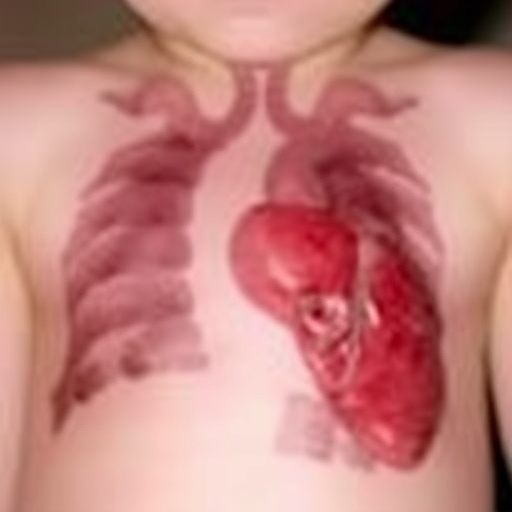A recent case report highlights the alarming medical consequences of scorpion stings, specifically focusing on a rare condition known as toxic myocarditis. This condition, characterized by inflammation of the heart muscle, was observed in a young child following an encounter with a highly venomous scorpion. This case sheds light on the intersection of toxicology and pediatrics, emphasizing the urgent need for heightened awareness among medical professionals regarding venomous wildlife and their potential health ramifications.
In the reported case, the child presented with symptoms consistent with myocarditis shortly after being stung. Initial evaluations revealed elevated cardiac enzymes and signs of heart inflammation. These findings are critical as they suggest the body was reacting to the toxins delivered by the scorpion’s sting. Such a response can lead to serious cardiac issues, including arrhythmias and potential heart failure, which underscores the necessity for prompt diagnosis and treatment.
Scorpion venom comprises a complex mixture of proteins, peptides, and enzymes that can have profound effects on the nervous system and cardiovascular health. In the child’s case, the components of the venom appeared to trigger an immune response that directly affected cardiac function, illustrating the potential for scorpion stings to lead to life-threatening complications. Understanding the biochemical pathways influenced by scorpion venom can offer insights into the mechanisms of toxic myocarditis.
The management of toxic myocarditis requires an interdisciplinary approach, drawing from cardiology, toxicology, and pediatrics. The child’s treatment included supportive care, such as medications to stabilize heart function and reduce inflammation, alongside advanced monitoring in a pediatric intensive care setting. This comprehensive management strategy is crucial, as the presentation of myocarditis can evolve rapidly, necessitating vigilant observation and rapid intervention.
Interestingly, while scorpion stings are more common in certain regions of the world, the reported case serves as a reminder that the risk is ever-present. Those living in or traveling to areas populated by venomous scorpions should be aware of the potential hazards and the necessary steps to take in case of a sting. Education on scorpion behavior and identification can help prevent stings, particularly in children who may unknowingly disturb these creatures.
From a public health perspective, this case stresses the importance of increasing awareness about venomous wildlife and their associated risks. Educational initiatives aimed at children and caregivers can play a vital role in preventing such incidents. Schools and community centers should provide information about local wildlife and promote safety measures to mitigate risks related to stings and bites.
Additionally, this case underlines the importance of research into the effects of scorpion venom on the human body. Further studies could elucidate the specific toxins responsible for myocardial damage and inform the development of targeted treatments. Research efforts should also focus on identifying which populations are at highest risk and designing tailored preventive strategies.
The emergence of toxic myocarditis as a consequence of scorpion sting in this young patient highlights a crucial gap in medical literature. Most literature on scorpion stings typically emphasizes neurotoxic effects, often overlooking the significant cardiovascular implications. The findings prompt a call for clinicians to consider the broader spectrum of complications associated with envenomation.
Furthermore, it is essential to establish clear guidelines for the management of patients presenting with symptoms indicative of myocarditis following a sting. These guidelines would aid healthcare providers in making rapid decisions regarding diagnostic testing and therapeutic interventions based on evidence and clinical experience.
The implications of this case extend beyond immediate patient care; they encompass broader societal considerations regarding wildlife management and public safety. Local governments in endemic areas should engage in active management techniques to control scorpion populations and minimize human-scorpion interactions, thus reducing sting incidents.
As we advance in our understanding of toxic myocarditis, there is potential for developing new therapeutic options tailored to counteract the specific effects of scorpion toxins. Collaborative efforts among researchers, clinicians, and public health officials are vital in pursuing innovative strategies to address venomous wildlife health risks.
This incident represents a crossroads between clinical medicine and ecological awareness, emphasizing the intricate relationship between humans and their environment. Acknowledging the risk posed by venomous species should inspire both medical vigilance and community action, fostering a proactive culture of safety and awareness.
In conclusion, the emergence of toxic myocarditis following scorpion sting in a child is a wake-up call for the medical community and the public alike. Education, research, and proactive measures are essential to prevent such cases in the future and to manage them effectively when they occur. As we continue to unravel the complexities of venomous species and their effects on human health, we must remain vigilant in our efforts to protect vulnerable populations, particularly children, from these potentially lethal encounters.
Subject of Research: Toxic myocarditis following scorpion sting in children
Article Title: Toxic myocarditis following scorpion sting in a child: a case report and pediatric management approach.
Article References:
Akbari, A., Niksefat, F., Mirshahi, A. et al. Toxic myocarditis following scorpion sting in a child: a case report and pediatric management approach. BMC Pediatr 25, 900 (2025). https://doi.org/10.1186/s12887-025-06266-4
Image Credits: AI Generated
DOI: https://doi.org/10.1186/s12887-025-06266-4
Keywords: scorpion sting, myocarditis, pediatric care, toxicology, envenomation, public health




